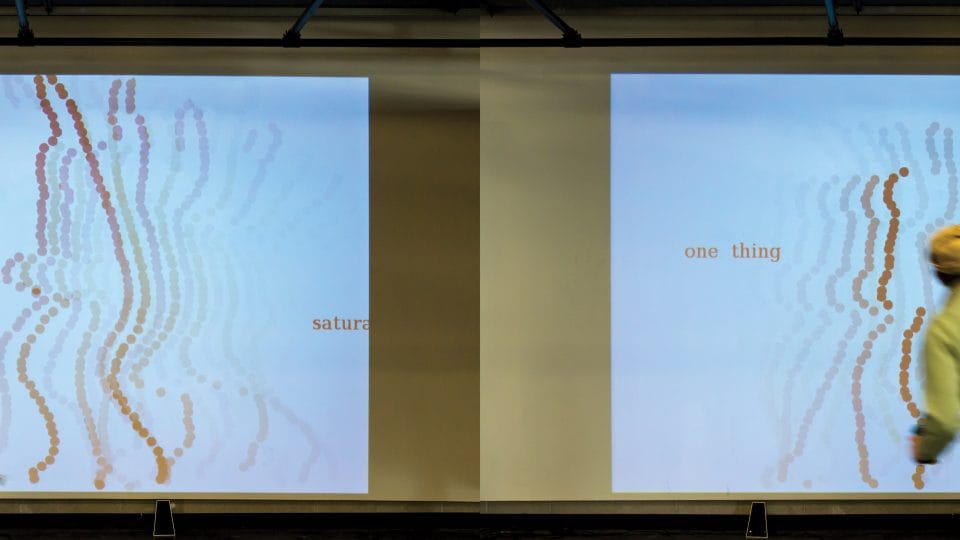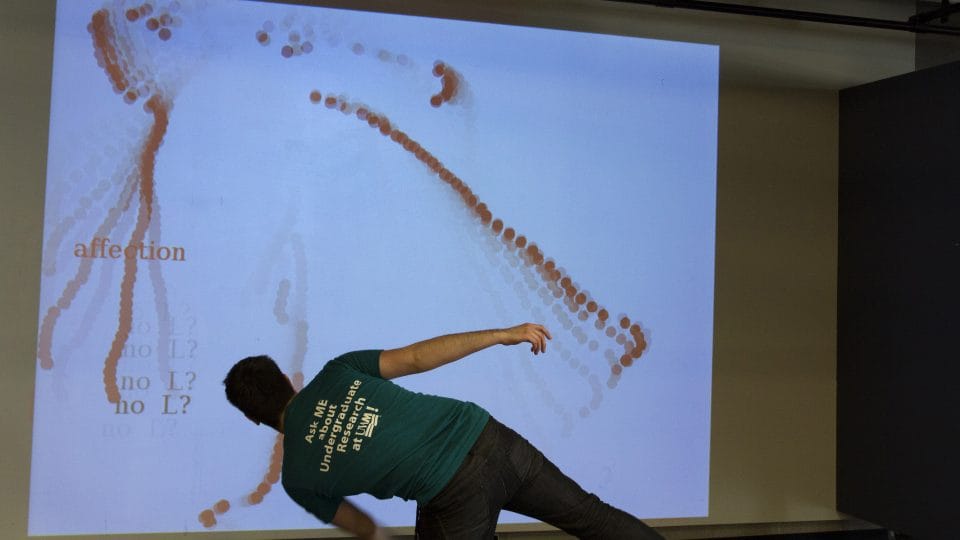enter, one of four interactive installations in the Body Language suite, is a work that combines conceptual and aesthetic principles from traditional installation, participatory art, and performance poetry, to explore relationships between text and embodied activity. Upon entering, viewer-participants meet with an almost real-time abstraction of themselves – an outline drawn with large reddish dots. The closer they are to the screen/camera, the larger their image becomes. Short blue-black phrases float around them, in animated sequence. With this exterior re-presentation of their bodies, viewers-turned-performers can grab and trigger the text; each word that a viewer’s outline touches will stop, turn red, and recite a line of poetry. enter asks interactors to leave behind their everyday movements, and attempts to accent each step and extension as a rich and performative inauguration.
The enter software does not work as one would expect, and pushes viewers to act in ways they normally wouldn’t. Rather than traditional body-tracking software, the code is written in such a way that only the outermost points on the horizontal axis are shown – for example, put your arms up in a V, and your head disappears; people who touch each other in the space of the installation, temporarily become one ‘body’ in the projection. The movements of and relations between each part and whole, in other words, both rupture and connect other parts and wholes.
The piece was originally exhibited on an old 8500 Macintosh (2000), which ran relatively slowly; in the latest version (2013), I’ve replicated the aesthetic feel the original’s ‘lag’ created by adding fading trails to each animated word and the viewers’ outlines. These vestigial traces creates less of a mirror and more of a “call and response, and response” space – much like that of a poet and his/her audience. Meaning is found in the relation between body and text, and the half-second lag amplifies that relation.
As viewer-participants learn how to perform this space, they move in alien ways. Whether they are trying to “speak,” or doing their best to avoid it, the situation invites them to poll styles of being and becoming – exaggerated gestures or jerky expressions, for example. I’ve watched some folks crawl into a ball and lash out at words with their arms, others dance and play on the fringes in an attempt to speak quickly and all at once, while still others get up close to the screen and squirm around words, so as not to speak.
enter is a recognition of the negotiations and contradictions inherent to the performance of communication, and of body. We are invited to use our flesh as a writing and speaking tool, to experience and practice a poetic, embodied, and relational language.
Related texts/press:










